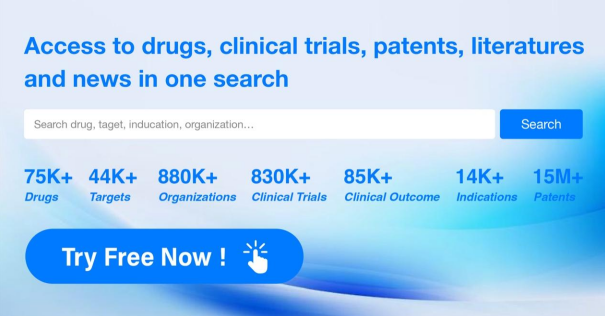Keywords:
Remogliflozin etabonate, Remogliflozin etabonate’s R&D Progress, Mechanism of Action for Remogliflozin etabonate, drug target for Remogliflozin etabonate.
Description:
This article summarized the latest R&D progress of Remogliflozin etabonate, the Mechanism of Action for Remogliflozin etabonate, and the drug target R&D trends for Remogliflozin etabonate.
Text:
Remogliflozin etabonate‘s R&D Progress
Remogliflozin etabonate is a small molecule drug that falls under the therapeutic area of Digestive System Disorders and Endocrinology and Metabolic Disease. It specifically targets SGLT2, a protein responsible for glucose reabsorption in the kidneys. By inhibiting SGLT2, Remogliflozin etabonate helps to lower blood glucose levels in patients with Type 2 Diabetes Mellitus and also shows potential in treating Nonalcoholic Steatohepatitis.
The drug was developed by Kissei Pharmaceutical Co., Ltd., a pharmaceutical organization based in Japan. It received its first approval in India in April 2019, making it available for use in the treatment of Type 2 Diabetes Mellitus and Nonalcoholic Steatohepatitis in that country.
Remogliflozin etabonate has reached the highest phase of development, which is the approved stage. This indicates that it has successfully undergone clinical trials and met the necessary regulatory requirements. The drug’s approval in India suggests that it has demonstrated positive results in terms of its therapeutic benefits and safety profile.
The approval of Remogliflozin etabonate is significant for patients with Type 2 Diabetes Mellitus and Nonalcoholic Steatohepatitis, as it provides them with an additional treatment option. Type 2 Diabetes Mellitus is a chronic condition characterized by high blood sugar levels, and effective management is crucial to prevent complications such as cardiovascular disease and kidney damage. Nonalcoholic Steatohepatitis, on the other hand, is a liver disease associated with obesity and metabolic syndrome, and there is currently no approved pharmacological treatment available.
The introduction of Remogliflozin etabonate into the market offers hope for patients suffering from these conditions, as it targets the underlying mechanisms contributing to their development. By inhibiting SGLT2, the drug promotes the excretion of excess glucose through urine, thereby reducing blood glucose levels. This mechanism of action has shown promising results in clinical trials.
Please click on the image below to directly access the latest data (R&D Status | Core Patent | Clinical Trial | Approval status in Global countries) of this drug.
Mechanism of Action for Remogliflozin etabonate: SGLT2 inhibitors
SGLT2 inhibitors are a type of medication used in the treatment of type 2 diabetes. SGLT2 stands for sodium-glucose co-transporter 2, which is a protein responsible for reabsorbing glucose in the kidneys. By inhibiting this protein, SGLT2 inhibitors help to lower blood sugar levels by promoting the excretion of glucose through urine. This mechanism of action is different from other diabetes medications that work by increasing insulin production or improving insulin sensitivity. SGLT2 inhibitors are typically taken orally and can be used as monotherapy or in combination with other antidiabetic drugs. They have been shown to be effective in reducing blood glucose levels, promoting weight loss, and lowering blood pressure. Common examples of SGLT2 inhibitors include dapagliflozin, canagliflozin, and empagliflozin. It is important to note that SGLT2 inhibitors may have side effects such as increased risk of urinary tract infections and genital fungal infections, so they should be used under the guidance of a healthcare professional.
Drug Target R&D Trends for Remogliflozin etabonate
SGLT2, or sodium-glucose co-transporter 2, is a protein found in the kidneys that plays a crucial role in glucose reabsorption. It is responsible for the reabsorption of glucose from the urine back into the bloodstream. By inhibiting SGLT2, glucose excretion is increased, leading to lower blood glucose levels. This mechanism is particularly important in individuals with type 2 diabetes, as it helps to reduce hyperglycemia. SGLT2 inhibitors are a class of medications that target this protein, providing an effective treatment option for managing diabetes and improving glycemic control.
According to Patsnap Synapse, as of 10 Oct 2023, there are a total of 82 SGLT2 drugs worldwide, from 116 organizations, covering 34 indications, and conducting 2123 clinical trials.
Please click on the picture link below for free registration or log in directly if you have a freemium account, you can browse the latest research progress on drugs, indications, organizations, clinical trials, clinical results, and drug patents related to this target
Conclusion
In conclusion, Remogliflozin etabonate is a small molecule drug developed by Kissei Pharmaceutical Co., Ltd. It targets SGLT2 and has been approved for the treatment of Type 2 Diabetes Mellitus and Nonalcoholic Steatohepatitis in India. Its approval provides patients with additional treatment options for these conditions.


